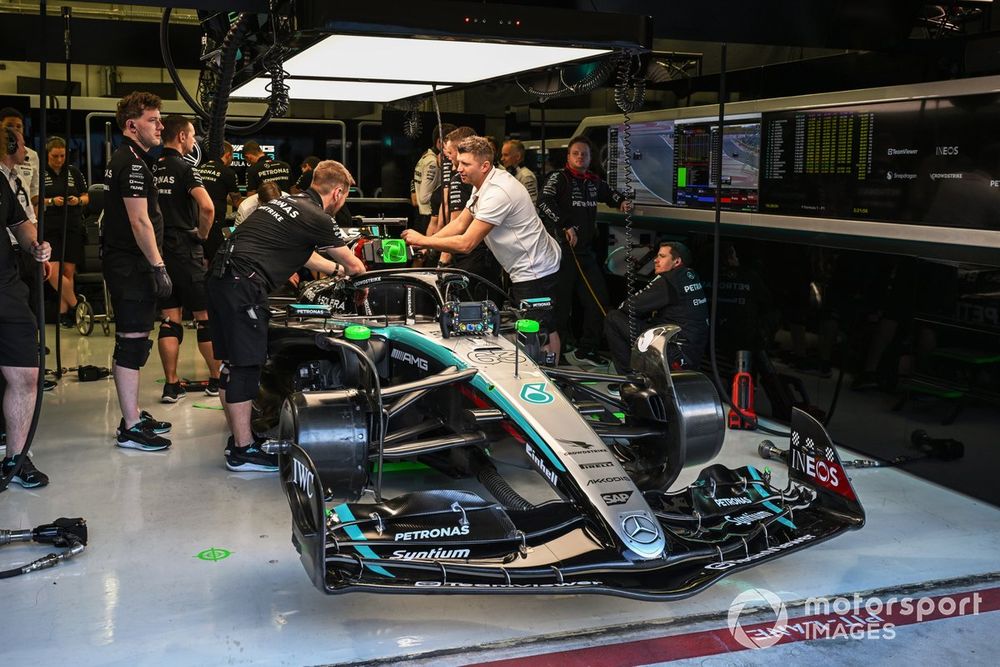The focus is on a thin piece of carbon fibre that connects the uppermost flap to the nosecone.
While it is detail-driven by a cute reading of the rulebook, it has not sparked some kind of legal furore among rival teams – as has been suggested – before the FIA finally declared it legal.
The thin connecting piece is fully compliant with the relevant Article 3.9.1 section e) of the technical regulations, which reads: “With the exception of the rearmost closed section, the rearmost point of every closed section must not be visible when viewed from above.”
In essence, this declares that only the uppermost section of the front wing may have its rear edge visible. The lower tiers must be hidden by the overlaps from the sections above.
For example, the rear edge of the second element is concealed by the third element above.
Mercedes, to remain compliant, has used this thin strip of carbon fibre that connects the main body of the fourth and final element to the nosecone to conceal the rear edge of the third rung.
Motorsport.com understands that the FIA was immediately satisfied that this interpretation was fully compliant and that Mercedes had been in contact with the governing body throughout the front wing’s gestation, contrary to reports the governing body has only belatedly declared it legal.
“What’s being put on a car is always following a, let’s say, exchange with the FIA all through the process,” clarified Mercedes motorsport boss Toto Wolff.
“It’s no such thing that you have a clever idea, and then you bolt it on the test, and you think that could be or couldn’t be challenged. That is a long process of dialogue that happens over the winter.
The car of George Russell, Mercedes F1 W15, in the garage
Photo by: Simon Galloway / Motorsport Images
“So, I feel we are in an OK place [regarding legality].”
Mercedes has attracted attention because of its novel approach, but even the team is not expecting its front-wing solution alone to result in a major performance improvement.
While suggestions that rivals are outraged by the W15 design are wide of the mark, Mercedes’ interpretation could be questioned for possibly putting the “spirit of the regulations” at risk.
The rules governing front wing design were tightened for the 2022 shift to ground effect in a bid to reduce outwash to slash dirty air, helping the cars follow more closely to boost overtaking.
The objective of Article 3 in the regulations is “to enable cars to race…
Click Here to Read the Full Original Article at Motorsport.com – Formula 1 – Stories…

